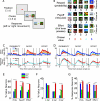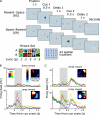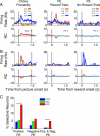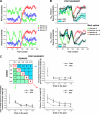Decision making and reward in frontal cortex: complementary evidence from neurophysiological and neuropsychological studies
- PMID: 21534649
- PMCID: PMC3129331
- DOI: 10.1037/a0023575
Decision making and reward in frontal cortex: complementary evidence from neurophysiological and neuropsychological studies
Abstract
Patients with damage to the prefrontal cortex (PFC)--especially the ventral and medial parts of PFC--often show a marked inability to make choices that meet their needs and goals. These decision-making impairments often reflect both a deficit in learning concerning the consequences of a choice, as well as deficits in the ability to adapt future choices based on experienced value of the current choice. Thus, areas of PFC must support some value computations that are necessary for optimal choice. However, recent frameworks of decision making have highlighted that optimal and adaptive decision making does not simply rest on a single computation, but a number of different value computations may be necessary. Using this framework as a guide, we summarize evidence from both lesion studies and single-neuron physiology for the representation of different value computations across PFC areas.
Figures





References
Publication types
MeSH terms
LinkOut - more resources
Full Text Sources
Miscellaneous

